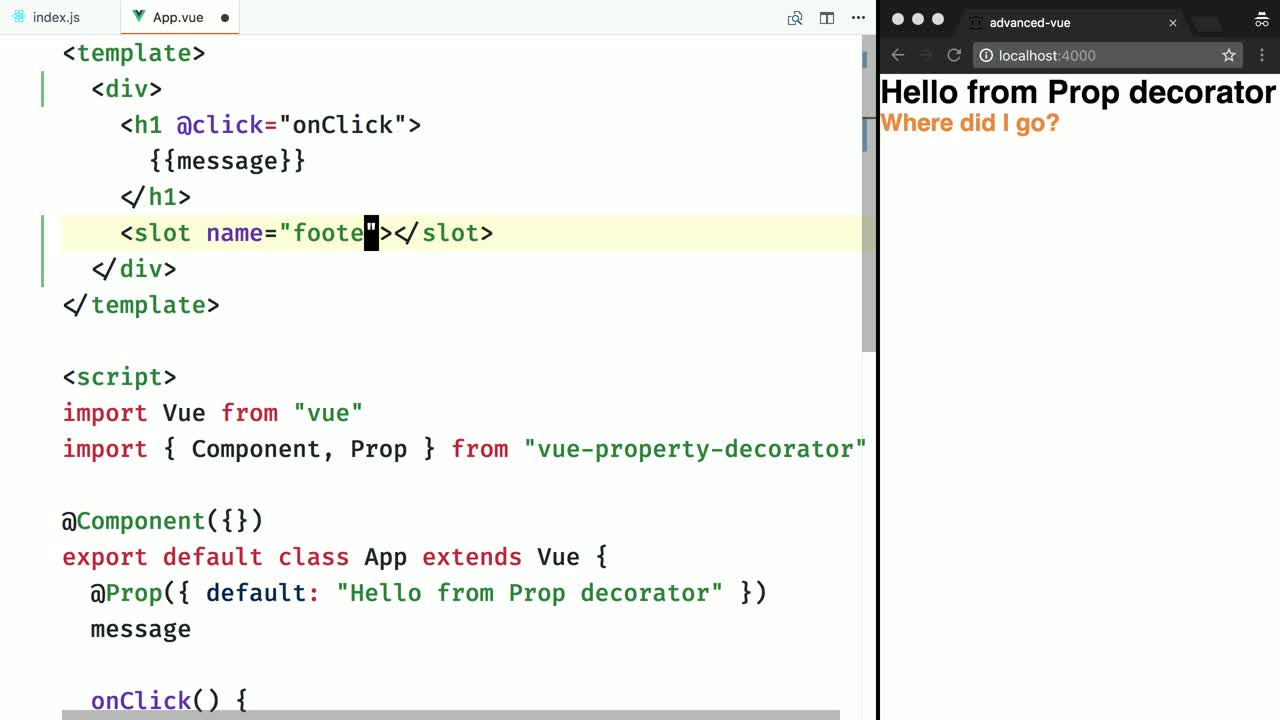Vue Slot Pass Props
Vue.js - The Progressive JavaScript Framework. In this example, we've chosen to name the object containing all our slot props slotProps, but you can use any name you like. # Abbreviated Syntax for Lone Default Slots In cases like above, when only the default slot is provided content, the component's tags can be used as the slot's template. This allows us to use v-slot directly on the component.
Tutorial
- A prop to apply a prefix or suffix to option labels. And now you have a select with 50 props. And there will still be something that someone wants to do with the component that isn’t covered by those props. So you can instead supply a slot for the options html, and pass the option data along with it to give the maximum configurability.
- This is the first(1) part of a two(2) part series on props in vue-router. Checkout the other articles in the series: Did you ever find yourself in a situation where you had some data in a.
- These cases are all easy to accomplish with the “slots” pattern – a.k.a. Passing JSX into a prop. TL;DR: You can pass JSX into any prop, not only the one named children, and not only by nesting JSX inside a component’s tag – and it can simplify data passing and make components more reusable. Quick Review of React Children.
While this tutorial has content that we believe is of great benefit to our community, we have not yet tested or edited it to ensure you have an error-free learning experience. It's on our list, and we're working on it! You can help us out by using the 'report an issue' button at the bottom of the tutorial.
All developers using component-based architectures, such as Vue’s and React’s, know that creating reusable components is hard, and most of the time you end up having a lot of props in order to make it easier to control and customize a component from the outside.

That’s not bad, but it’s true that passing lots of props can get a bit cumbersome and ugly. However, there’s a way for every Vue.js component style to cope with it.
Let’s take as an example the vuetify’s button component, one of the simplest ones. Say that we want to pass the same bunch of props in most cases:
It could make sense to have them in a separate file, let’s call it props.js:
JSX and Render Functions
Since they give you more power and flexibility when it comes to rendering, it’s fairly easy to pass multiple props at once.
In a render function:

And in JSX:
Using a Vue.js template
What about using the Vue.js DSL (or template)? No worries, that’s also possible. All you need to do is to use the v-bind directive. Given an object that you must define in the data option of your component it will bind all props:
Vue Pass Props To Slot
With this trick you won’t need to fill your template with repeated props at several places in your app, while still being able to use the beloved template tag.
Wrapping Up
Passing multiple props to a component can be simplified using the examples mentioned in this article. This is especially useful for presentational and third party components that have lots of props.
Vue Props Data
Keep in mind that the examples used here are merely educational. If you want to stay DRY (Don’t Repeat Yourself) there could be better approaches depending on the specific case, such as creating your own wrapper components.